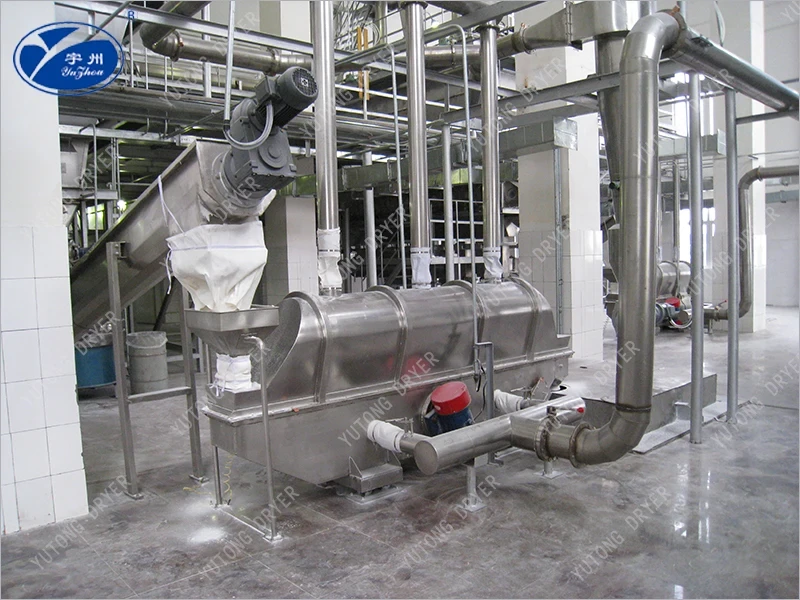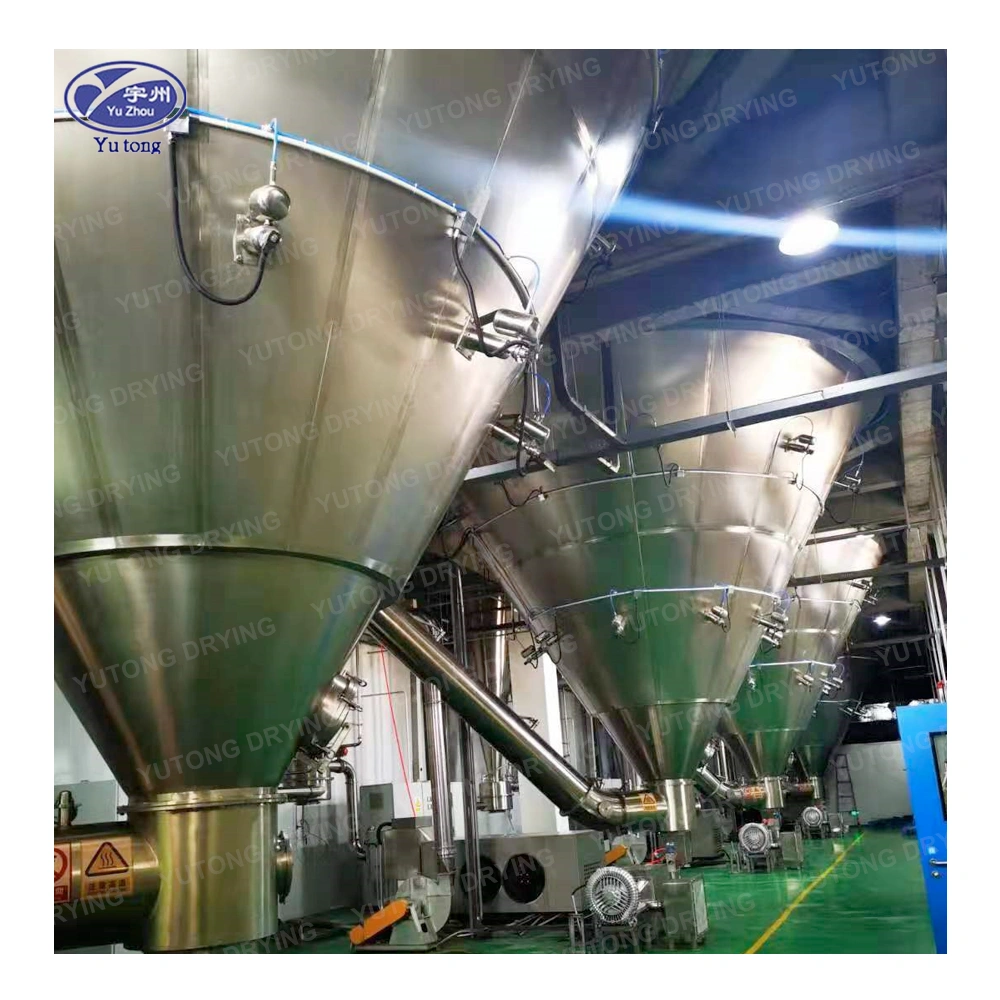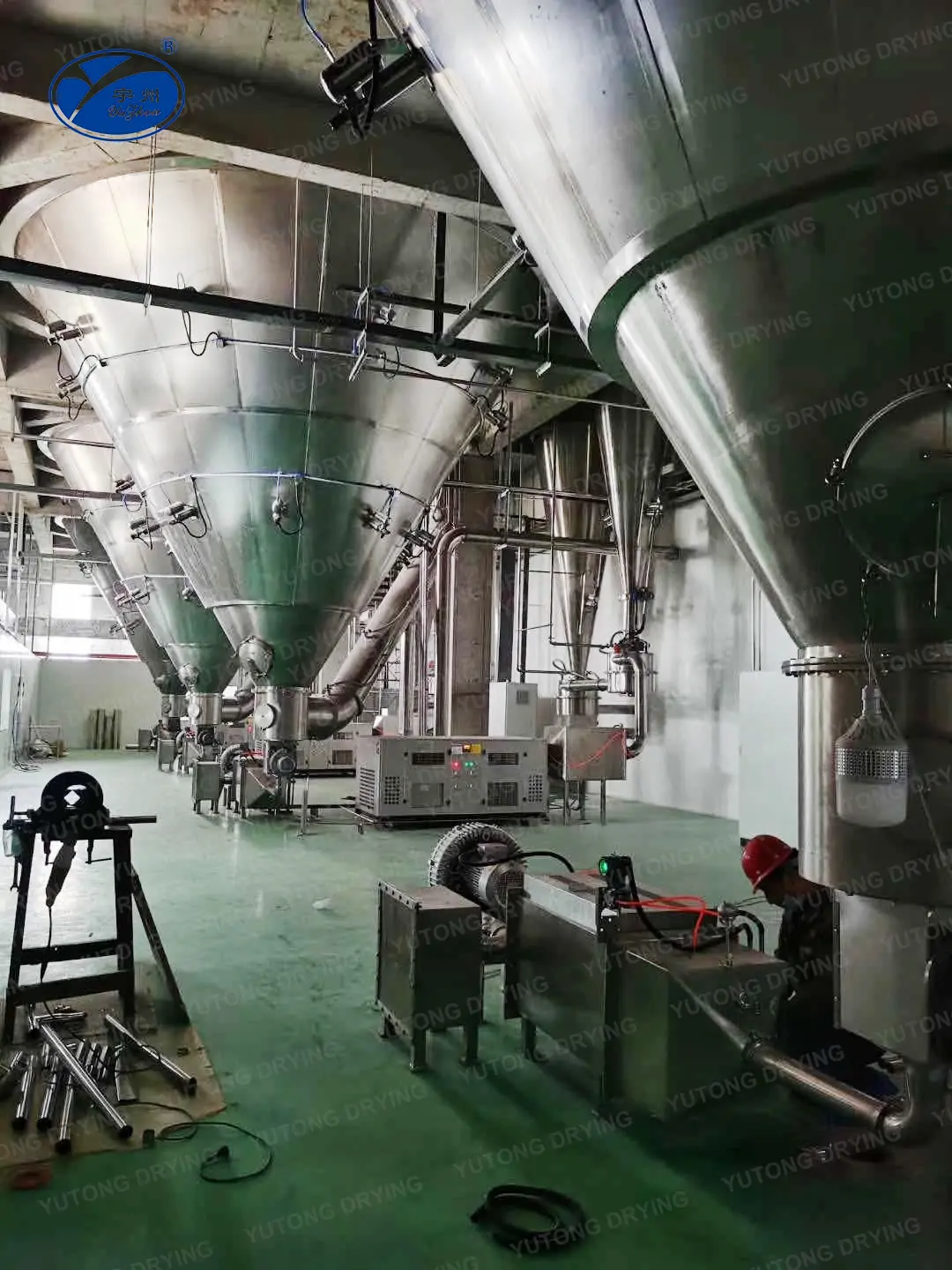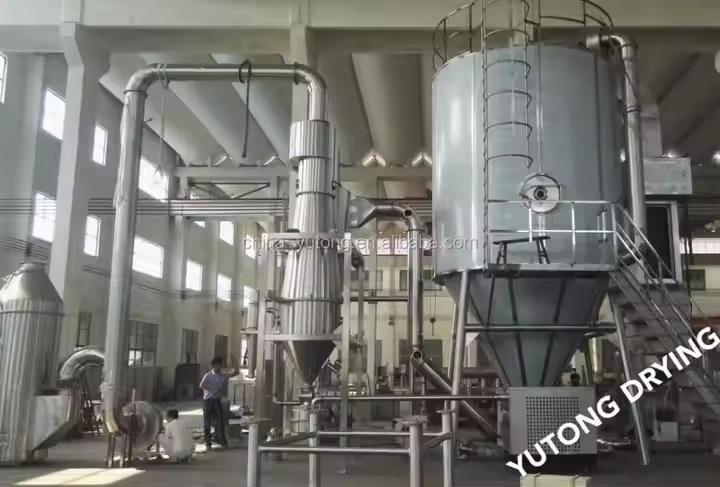In the dynamic landscape of food processing, efficiency and product quality are of paramount importance. The industry continuously seeks innovative solutions to enhance these aspects, and one such cutting-edge technology gaining momentum is the fluidized bed dryer. This sophisticated equipment not only boosts drying efficiency but also significantly reduces energy consumption and minimizes the emission of nitrogen oxides (NOx), which are harmful pollutants. As a result, fluidized bed dryers are becoming a pivotal element in modern food processing, offering transformative benefits across various applications.
The adoption of fluidized bed dryers aligns with the industry’s pursuit of sustainable practices, ensuring that the environmental footprint of food processing is minimized. This technology supports the dual goals of enhancing product quality while adhering to stricter environmental regulations. As consumer demands evolve, with an increasing focus on sustainability and health, the fluidized bed dryer represents a strategic investment for food processors aiming to stay competitive and meet these expectations.
Understanding Fluidized Bed Drying
Fluidized bed drying is a process where solid particles are suspended in an upward flow of gas, typically air, which creates a fluid-like state. This innovative method facilitates uniform drying and efficient heat transfer, setting it apart from traditional drying techniques. By creating a fluidized state, the technology ensures that each particle is equally exposed to the drying medium, resulting in a more consistent and efficient drying process. This uniformity is particularly beneficial in maintaining the quality of delicate food products, which can be adversely affected by uneven drying.
The fluidized bed drying process is versatile and adaptable, making it suitable for a wide range of food products, from grains to powders. Its adaptability is one of the reasons why it has become an essential tool in the food industry, capable of meeting the varying demands of different food processing requirements. Moreover, the technology can be customized to suit specific product needs, ensuring optimal drying conditions and preserving product integrity.
How Does a Fluidized Bed Dryer Work?
A fluidized bed dryer consists of a perforated plate or a bed through which hot air is passed. The food particles are placed on this bed, and as the air flows through, it lifts and suspends the particles, creating a fluidized state. This ensures that each particle is evenly exposed to the drying air, resulting in consistent moisture removal. The design of the dryer allows for precise control over the drying parameters, such as temperature and airflow, which can be adjusted to suit different food products.
The ability to control these parameters is crucial for maintaining the nutritional and sensory qualities of food products. For instance, delicate items like fruits or herbs can be dried at lower temperatures to preserve their flavors and nutrients. This precision not only enhances the quality of the final product but also reduces the risk of over-drying or thermal degradation, which can occur with less sophisticated drying methods.
Advantages of Fluidized Bed Drying
- Efficiency: Fluidized bed dryers provide rapid and uniform drying, reducing processing time and energy consumption. This efficiency translates to lower operational costs and increased throughput, making it a financially attractive option for food processors.
- Quality Preservation: The gentle drying process helps preserve the nutritional and sensory qualities of food products. By avoiding high temperatures and ensuring uniform drying, the essential vitamins, minerals, and flavors are retained, resulting in superior product quality.
- Scalability: These dryers can be easily scaled to accommodate various production capacities, making them suitable for both small and large-scale operations. This flexibility allows food processors to expand their operations without significant re-investment in new equipment.
- Reduced Emissions: The technology minimizes NOx emissions, making it an environmentally friendly option for food processing. By reducing harmful emissions, fluidized bed dryers contribute to cleaner air and align with global efforts to combat environmental pollution.
Applications of Fluidized Bed Dryers in the Food Industry
Fluidized bed dryers are versatile and can be used for a wide range of food products. Their adaptability and efficiency make them a preferred choice for various applications within the food industry, enhancing product quality and shelf life.
Drying of Grains and Cereals
Grains and cereals are staple food items that require efficient drying to ensure long shelf life and prevent spoilage. Fluidized bed dryers excel in drying grains such as rice, wheat, and corn. The uniform drying process helps maintain the quality and nutritional value of these products. By ensuring even moisture removal, fluidized bed dryers prevent the growth of mold and bacteria, which can lead to spoilage and product loss.
Moreover, fluidized bed drying allows for gentle handling of grains and cereals, preserving their structural integrity. This is particularly important for products that are sensitive to mechanical stress, as it ensures that the final product retains its desired texture and appearance. The ability to preserve these qualities makes fluidized bed drying an ideal choice for producers aiming to deliver high-quality grain products to the market.
Drying of Fruits and Vegetables
Fruits and vegetables are rich in moisture and require careful drying to preserve their flavor and nutrients. Fluidized bed dryers offer gentle drying conditions that prevent the degradation of vitamins and flavors. This method is ideal for drying products like apple slices, berries, and leafy greens. The controlled drying environment helps maintain the vibrant colors and natural sweetness of fruits, enhancing their appeal to consumers.
In addition to preserving flavor and nutrients, fluidized bed drying extends the shelf life of fruits and vegetables, reducing waste and improving supply chain efficiency. By minimizing moisture content, the risk of spoilage is significantly reduced, allowing for longer storage and transportation times without compromising quality.
Processing of Powders and Spices
Powders and spices are essential ingredients in the food industry, and their quality greatly impacts the final product. Fluidized bed drying ensures uniform moisture removal from powders such as flour, cocoa, and spices like turmeric and chili powder. This helps prevent clumping and maintains the quality of the product. Consistent moisture content is crucial for preserving the potency and flavor of spices, ensuring that they deliver the desired taste profile in culinary applications.
Furthermore, the precise control offered by fluidized bed dryers allows for customization of the drying process to suit different spices and powders. This customization ensures that each product is dried to its optimal moisture level, enhancing its shelf stability and quality. As a result, food manufacturers can rely on fluidized bed drying to produce high-quality spice and powder products that meet consumer expectations.
Drying of Snacks and Confectionery
The snack and confectionery industry benefits from the quick and efficient drying capabilities of fluidized bed dryers. Products like potato chips, popcorn, and candies require precise moisture control to achieve the desired texture and taste. Fluidized bed dryers deliver consistent results, enhancing product quality. By maintaining the right moisture levels, these products achieve the perfect crunch or chewiness that consumers expect.
Additionally, fluidized bed drying helps reduce the risk of product defects such as sogginess or stickiness, which can occur with improper drying. This reliability is crucial for snack and confectionery producers who aim to maintain a consistent product offering. As consumer preferences evolve, the ability to deliver high-quality snacks and confectionery products will continue to be a key differentiator in the market.
Environmental Impact and NOx Emissions
One of the significant advantages of fluidized bed dryers is their ability to reduce NOx emissions. NOx, or nitrogen oxides, are harmful pollutants that contribute to air pollution and environmental degradation. Traditional drying methods often produce higher levels of NOx emissions, but fluidized bed dryers are designed to minimize these emissions, making them a more sustainable choice for the food industry.
Reducing NOx emissions is not only beneficial for the environment but also helps food processors comply with increasingly stringent environmental regulations. By adopting fluidized bed dryers, companies can demonstrate their commitment to sustainability and environmental stewardship, which can enhance their reputation and brand value.
How Fluidized Bed Dryers Reduce NOx Emissions
Fluidized bed dryers operate at lower temperatures compared to conventional drying methods. This not only reduces energy consumption but also minimizes the formation of NOx emissions. Additionally, the efficient heat transfer in fluidized bed dryers ensures that the drying process is completed more quickly, further reducing the potential for NOx formation. The combination of lower temperatures and faster processing times makes fluidized bed drying an environmentally friendly choice.
The reduction of NOx emissions aligns with global efforts to combat air pollution and climate change. By choosing fluidized bed dryers, food processors can contribute to cleaner air and a healthier environment while also benefiting from the operational efficiencies that this technology offers. This dual advantage makes fluidized bed drying an attractive option for forward-thinking companies committed to sustainability.
Conclusion
The application of fluidized bed dryers in the food industry is revolutionizing the way food products are processed. With their efficiency, scalability, and environmental benefits, these dryers are becoming an integral part of modern food processing operations. From grains to spices, the fluidized bed drying method ensures high-quality products with minimal environmental impact. As the industry continues to evolve, the importance of such technologies will only grow.
As the food industry continues to evolve, the adoption of innovative technologies like fluidized bed dryers will play a crucial role in meeting consumer demands for quality and sustainability. By embracing these advancements, food processors can enhance their operations, reduce energy consumption, and contribute to a cleaner environment. The fluidized bed dryer offers not just a technical advantage but also aligns with the broader industry goals of sustainability and efficiency.
In conclusion, the fluidized bed dryer is more than just a drying technology; it is a step towards a more efficient and sustainable future in food processing. Whether you are a small business or a large-scale operation, incorporating fluidized bed drying into your processes can lead to significant improvements in product quality and environmental performance. Embracing this technology is an investment in the future, ensuring that the food industry can meet the challenges of tomorrow while delivering high-quality products to consumers today.




